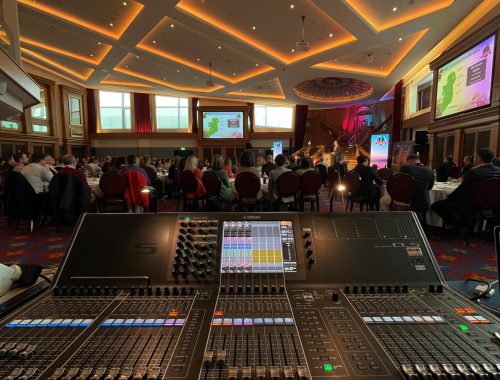Screw ups big and small and what they mean for us

In my first blog I detailed an event in which I made a mistake involving the routing of various Audio in relation to the sound desk I work with at my placement. As such I have decided to drive deeper into how I learned from my mistakes and how, over time, I though my mistakes I grew to have a deeper understanding of said equipment.
The Moment in question, in which I faced what could be called a “challenging experience”, was focused around one student with a Music Track, an acoustic guitar, and a didgeridoo. It was only my second week in placement, said student with said didgeridoo came in early in order to setup, it was during the process of miking his acoustic guitar that I realised I faced a conundrum, not only did I not know how to play his track off his phone through the speakers in the room, but I also had no idea how to send the track to a monitor on stage.
People rely on a sound engineer to know what everything on their desk does, There is security for the artist to know that the sound engineer will do everything in their power to provide the best sound possible. As stated in Estelle R. Jorgensen’s book, ‘The Art of Teaching Music’ “it is important to underscore the ways in which social contexts frame how our actions are read by others. Acknowledging the impact of these social and cultural contexts on these interpretations requires studying these contexts so that we can more closely tailor our actions to the expectations of those with whom we work.” [1]
The expectation that this student had would be that I would be able to properly set them up technically, but I would fail in my ultimate goal. Using Gibbs’ reflective model I can adequately detail my thoughts and feelings around the situation. [2]

What Happened?
Unable to figure out how to successfully route an audio track to a monitor and the main room speakers left me in a situation where I couldn’t provide the best experience for the student. I jury rigged the situation by routing the left half of the stereo image of and sending that directly to the monitor while taking the right signal and routing it to the desk, the end result did not sound amazing but was serviceable.
Feelings and Evaluation.
I felt like I had failed the student, it was my job to ensure that their performance went well and I had let them down by not being 100% sure of my surroundings, however I knew I couldn’t allow myself to become discouraged as this could serve as an important moment to learn from. The performance itself went smoothly bar the slightly subpar sound,. The crowd of other students however did not seem bothered by it suggesting that my Jerry rigging had worked in its most basic capacity. The student performing however could tell that all was not as it could be, I apologised for my lack of knowledge on the subject and told them I would make it up to them (I did, later).
Analysis and conclusion
In retrospect it’s easy to see that my failings came about due to my generalised vague understanding of the patching system within the Sonic Lab. In previous classes up to this point I had relied on connecting interments and mics directly to monitors on stage, jumping into working with the entire lab was foolish without prior practice.
Action Plan
Thankfully this mistake proved a sort of crucible for myself, next time I was in I had Jonny teach me in depth how the patching system within the lab worked. Gradually, with practice, patience, and perhaps a little luck, I can say confidently now that I have a full understanding of not only patching through to the desk, but also the systems that allow me to send audio from the desk to various different audio sources.
Two weeks later my skills were put to the test when the same student who I had failed previously came to me with another tech spec, once again he was using a track and would need a monitor mix. This time, all went perfectly, he could hear himself and his track clearly through the monitor, and the track and his guitar could be heard clearly throughout the room, a triumph. The most rewarding part of all being the thanks and commendation I received from the performing student, noting how this time all had gone to plan.
One of the most important lessons I gained from this experience was how my actions, and/or in-action, can have consequences and how I must hold myself to a standard that all may enter the lab and understand that they are in good hands. It also shows some of the benefits of mistake driven learning and how environments that allow for mistakes can lead to valuable lessons. [3]
Bibliography:
(1) Jorgensen, Estelle R.. The Art of Teaching Music, Indiana University Press, 2008. ProQuest Ebook Central, http://ebookcentral.proquest.com/lib/qub/detail.action?docID=348677.
Created from qub on 2022-03-21 17:04:52.
(2) University of Cumbria Academic Services & Retention Team (2016) Gibbs’ reflective cycle, Available at: https://my.cumbria.ac.uk/media/MyCumbria/Documents/ReflectiveCycleGibbs.pdf
(3) Pappas, C., 2022. 7 Benefits Of Mistake-Driven Learning. [online] eLearning Industry. Available at: <https://elearningindustry.com/7-benefits-of-mistake-driven-learning> [Accessed 23 March 2022].


